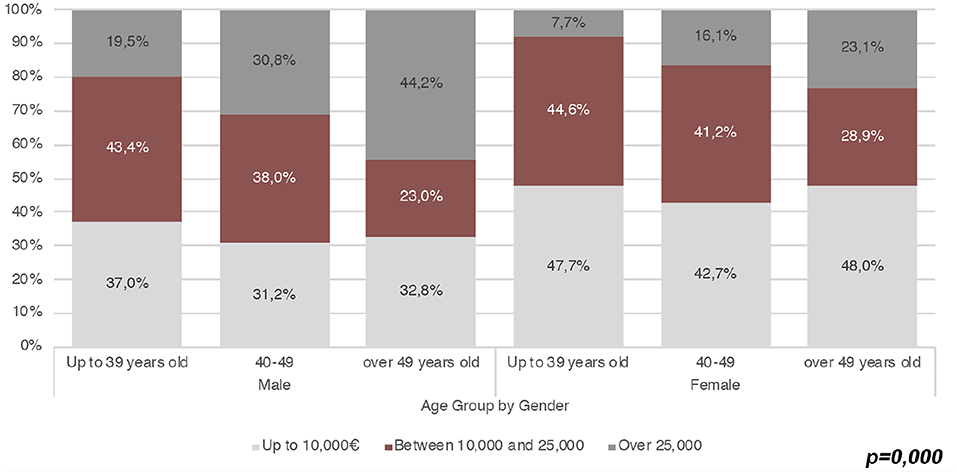Gender Inequality in Precarious Academic Work: Female Adjunct Professors in Italy
- 1Department of Sociologia e Diritto dell'Economia, University of Bologna, Bologna, Italy
- 2Department of Sociologia e Ricerca Sociale, University of Milan Bicocca, Milan, Italy
A Corrigendum on
Gender Inequality in Precarious Academic Work: Female Adjunct Professors in Italy
by De Angelis, G., and Grüning, B. (2020). Front. Sociol. 4:87. doi: 10.3389/fsoc.2019.00087
In the original article, there was a mistake in the legend for Figure 4. The second wage range is Between 10,000 € and 25,000 €, so the third is Over 25,000 €. The same error affects the text describing the figure. The correct legend appears below and a correction has been made to the The Careers of APs: A General Overview section, paragraph 10:
“Figure 4 shows the distribution of wage ranges by sex and age. In all the age groups, the number of workers earning up to € 10,00013 is greater among women than men, whereas in all the age groups, the male rate of APs with a wage higher than € 25,000 per year is almost double the female rate. The difference by gender is even greater among younger APs earning more than € 25,000 per year, with an incidence of 19.5% for men and 7.7% for women. Furthermore, beyond having lower wages, female APs also have a more fragmented work experience. Indeed, if on average, the majority of APs who declare extra-academic work contracts are either self-employed (30.6%) or permanent employees, both categories are higher among men (34.1 and 23.2%) than among women (26.2 and 20.7%). By contrast, more women than men carry out informal work (20.1% vs. 17.4%), have fixed-term employment contracts (9% vs. 6.1%), or mixed forms of semi-employed contracts (24.1% vs. 18.8%).”
The authors apologize for this error and state that this does not change the scientific conclusions of the article in any way. The original article has been updated.
Footnotes
13. ^We considered here all the jobs carried out by the respondents, both within and outside academia.
Keywords: unpaid work, adjunct professor, academic career, gender inequalities, Italy
Citation: De Angelis G and Grüning B (2020) Corrigendum: Gender Inequality in Precarious Academic Work: Female Adjunct Professors in Italy. Front. Sociol. 5:31. doi: 10.3389/fsoc.2020.00031
Received: 04 April 2020; Accepted: 17 April 2020;
Published: 19 May 2020.
Edited and reviewed by: Annalisa Murgia, University of Milan, Italy
Copyright © 2020 De Angelis and Grüning. This is an open-access article distributed under the terms of the Creative Commons Attribution License (CC BY). The use, distribution or reproduction in other forums is permitted, provided the original author(s) and the copyright owner(s) are credited and that the original publication in this journal is cited, in accordance with accepted academic practice. No use, distribution or reproduction is permitted which does not comply with these terms.
*Correspondence: Gianluca De Angelis, Z2lhbmx1Y2EuZGVhbmdlbGlzQHVuaWJvLml0; Barbara Grüning, YmFyYmFyYS5ncnVuaW5nQHVuaW1pYi5pdA==
 Gianluca De Angelis
Gianluca De Angelis Barbara Grüning
Barbara Grüning